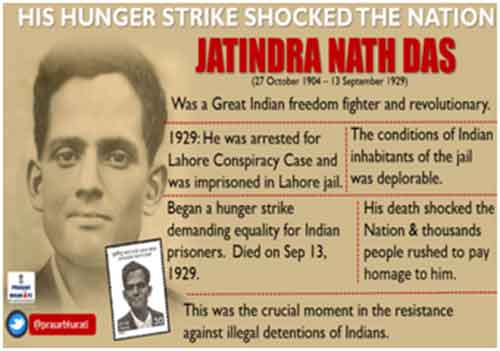A grim scenario is unfolding itself in India over the last 6 years and 2 months. Social activists are being arrested on fabricated charges under Draconian laws – where in bail is denied – and incarcerated with no end in sight to their trial. The period of imprisonment itself becomes a long punishment. Many of the detenue are from the minority communities like Muslims, tribals, dalits, Christians, poets, intellectuals, writers, academicians, students, journalists and those working for civil liberties and democratic rights issues. Hundreds of habeas corpus petitions were lying pending in the Jammu and Kashmir High Court last year for months after the great betrayal of the Kashmiris!!! The legal process of trying for bail from lower court to the apex court brings no relief.
Democratic protests in support of these activists have been curtailed – section 144 IPC has been imposed eternally in many popular protests sites; police permission is not granted for protests; number of protesters has been limited; protests spaces are being shrunk; strict watch is kept through CCTV cameras, drones, AI, facial recognition techniques – all these are used by the state to ensure a chilling experience of participating in a protest. The judiciary turns a blind eye when the right to peacefully protest is abrogated. The corporate press censors out the news or distorts the coverage. Parliament itself has no time to admit a call attention debate notice on such issues of public importance. To this must be added that a long term concerted effort for mass protests against curtailment of democratic rights has not got built ever since the Internal Emergency era, 1975-77. Discussion of the future of such concerted effort might usefully begin with the recognition of this fact. Sumanta Banerjee, author and veteran democratic rights activists commented in Countercurrents.org on 16 January, 2019 in relation to Anand Teltumbde’s urgent plea for support:
“While of course understanding the need for approaching courts for justice for civil rights activists like you, there’s a need for supplementing such judicial moves by organizing mass movements – even against judicial orders which violate democratic rights.”
Ranjit Sur, a central secretariat member of the Association for the Protection of Democratic Rights (APDR) in an interview to Sanhati on 24 January, 2019 sounded an optimistic note:
“There is repression on so-called “urban Naxals” across the country. All of this may lead to a certain rejuvenation of the rights movement, some traces of which we have started to see.”
So what options are available in situations where activists are languishing in jails for years all over the country with their number reaching tens of thousands? A cue emerges from the revolutionaries who fasted in prisons for illegal detentions, improvement of jail condition and rights of under-trials and convicted prisoners.
Satyagraha as a weapon of political resistance
In 1929, during the anti-colonial struggle both Batukeshwar Dutt and Bhagat Singh had decided upon a hunger strike in the Central Jail Mianwali, Punjab (now in Pakistan) in order to bring about a change in the rigorous jail life. It was demanded “that all persons who are convicted of offences that are actuated by political motives, and not for any personal gain or object, should be regarded as political prisoners who should be allowed facilities for study, newspaper, better diet, and association of all political prisoners with each other.” The undertrials threw in their weight by declaring a sympathetic hunger strike on 13 July, 1929. On 28 July the condition of Jatin Das – member, Hindustan Socialist Republican Association – became serious while lodged in the Borstal Jail, Lahore; he finally embraced death after fasting for 63 days on 13 September, 1929, aged 24 years. The Punjab Jail Enquiry Committee was forced to promise amelioration of the jail conditions. Again the Kakori Conspiracy was a train robbery that took place between Kakori and near Lucknow on 9 August, 1925; the robbery was organized by Hindustan Republican Association. The robbery was conceived by Ram Prasad Bismil & Ashfaqullah Khan. After the court verdict in the case the accused were sent to different jails of United Province. In the jail the revolutionaries argued that since they had been charged with crimes against the British rule they should be treated as political prisoners. These prisoners went on a hunger strike for periods ranging from 4 days to 45 days in different jails in United Province. Most significant was the hunger strike at Andaman Islands in 1933. This lasted for 45 days, three lives were lost but the hunger strike kept the spirit of anti-colonial struggle alive in the lull after the failure of Gandhi’s Civil Disobedience Movement of 1930.
Hope lies in the younger prisoners – particularly the students – presently lodged in various jails launching a Satyagraha on similar lines. It could set in motion mass campaigns and movements in civil society and put pressure on the authorities.


